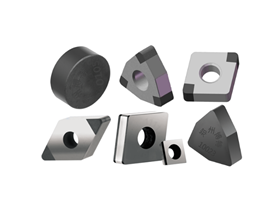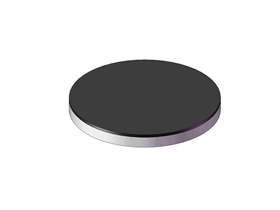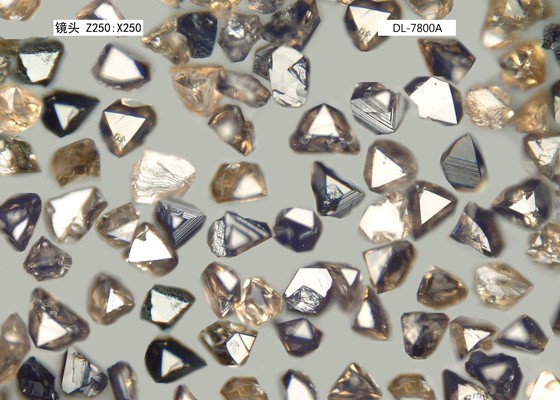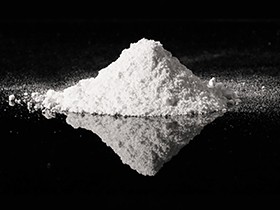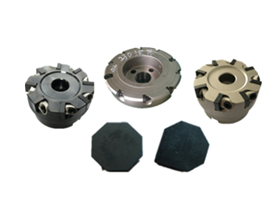In the field of metal cutting, CBN inserts are widely used for their excellent characteristics such as high hardness, wear resistance and thermal stability.However, the increase of cutting heat during the cutting process is always a problem that needs to be focused on and effectively controlled, because excessive cutting heat not only affects the service life of the tool, but also may lead to a decrease in the machining accuracy of the workpiece and deterioration of the surface quality.In this paper, we will discuss how to effectively control the CBN inserts in the cutting process of cutting heat increase, covering the cutting parameters optimisation, optimisation of tool geometry, the use of cutting fluid and the stability of the machining system and other key aspects!
I. Cutting parameter optimisation
The reasonable choice of cutting parameters plays a decisive role in the generation of cutting heat.Cutting speed, feed and depth of cut are three main parameters are related to each other and have different degrees of impact on the cutting heat.
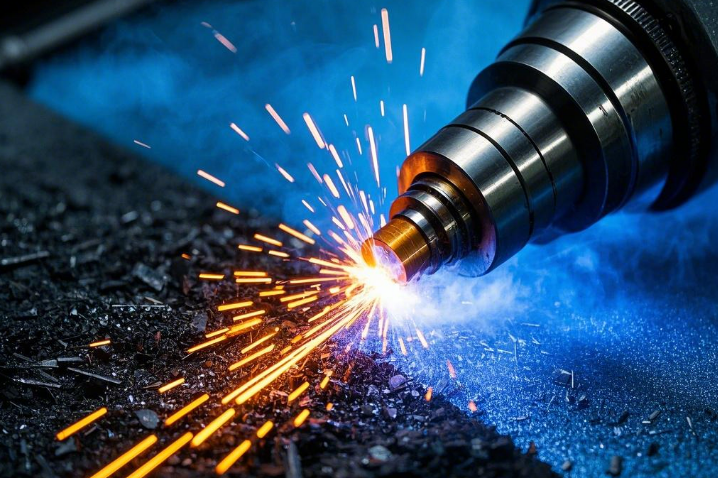
(A) cutting speed adjustment
Cutting speed and the amount of cutting heat generation is roughly proportional to the relationship.Usually, appropriate reduction of cutting speed can significantly reduce the cutting heat.For example, in the cutting process of hardened steel, if the cutting speed from the higher conventional value is moderately reduced, it will be found that the cutting temperature is significantly reduced.This is due to the fact that the faster the cutting speed, the more heat is generated by the friction between the tool and the workpiece and by the deformation of the metal.However, it should be noted that the cutting speed should not be too low, otherwise it will seriously affect the machining efficiency, resulting in a longer production cycle.Therefore, in the actual machining process, according to the characteristics of the workpiece material, tool material performance and specific machining requirements and other factors to weigh, to determine an effective control of cutting heat, but also to ensure that the machining efficiency of the appropriate cutting speed.
(B) the feed amount of reasonable settings
Changes in the amount of feed on the impact of cutting heat is more complex.When the feed increases, the cutting thickness increases, and the cutting force increases accordingly.However, the cutting heat does not necessarily increase in the same proportion.Within certain limits, an appropriate increase in feed allows the heat of cutting to be dispersed over a larger chip volume, thereby reducing the average chip temperature.For example, when roughing certain materials, appropriately increasing the feed can control the increase in cutting heat to some extent while increasing the material removal rate.However, if the feed is too large, it will lead to excessive cutting force, which may cause damage to the tool and a serious decline in machining accuracy.Therefore, it must be based on the hardness and toughness of the workpiece material, the strength and sharpness of the tool, as well as the machining surface quality requirements and other factors, to scientifically and reasonably determine the amount of feed.
(C) cutting depth control
Depth of cut on the cutting heat relative to the impact of cutting speed is relatively small, but the appropriate depth of cut selection for the control of cutting heat should not be ignored.Increasing the depth of cut will increase the cutting force and cutting heat.In the roughing stage, in order to quickly remove a large amount of material, you can use a larger depth of cut, when the cutting heat can be dispersed in the thicker chip layer, so as not to make the local temperature too high.In finishing, the depth of cut is usually smaller, the focus is to ensure machining accuracy and surface quality, at this time also need to pay close attention to the cutting heat on the dimensional accuracy of the workpiece and the impact of surface roughness, to avoid deformation of the workpiece due to the heat of cutting or surface burns and other issues.
Second, the optimisation of tool geometry parameters
The geometric parameters of the tool directly affect the cutting force in the cutting process, cutting deformation and friction between the tool and the workpiece, which in turn has an important impact on the cutting heat.
(A) front angle optimisation
Increasing the front angle of the tool can effectively reduce the cutting deformation, thereby reducing the cutting force and cutting heat.When the front angle of the tool increases, the tool is easier to cut into the workpiece, the degree of deformation of the metal is significantly reduced, the resulting heat is also reduced.For example, when machining some softer metals, an appropriate increase in rake angle can significantly reduce the generation of cutting heat.However, too large a rake angle may result in reduced tool strength and breakage during the cutting process.Therefore, when selecting the tool rake angle, it is necessary to consider the material of the tool, the hardness of the workpiece material and the requirements of the machining process, etc., to determine an optimal rake angle value that can effectively reduce the cutting heat, but also ensure the strength and durability of the tool.
(ii) Back angle adjustment
A suitable back angle is essential to reduce the friction between the back face of the tool and the machined surface, thus helping to control the cutting heat.If the back angle is too small, the friction between the back face of the tool and the workpiece will be intensified, generating more cutting heat, and at the same time may also affect the quality of the machined surface; while the back angle is too large, it will reduce the strength of the tool, making it easy to be damaged in the cutting process.In the finishing process, in order to obtain better surface quality, usually can be appropriate to increase the rear angle to reduce the friction of the rear blade surface; and in roughing, due to the cutting force is larger, the rear angle can be relatively small to ensure the strength and stability of the tool, so as to control the generation of cutting heat on the whole.
(C) edge grinding
Appropriate grinding of the cutting edge of the tool, such as chamfering or passivation treatment, can significantly enhance the strength and wear resistance of the edge, which in turn has a positive impact on the control of cutting heat.Chamfering makes the edge more stable during cutting, reducing edge breakage and heat generation.Passivation, on the other hand, removes microscopic defects from the cutting edge, allowing the edge to cut more smoothly into the workpiece during cutting, effectively reducing friction and cutting heat.For example, in high-speed cutting or processing of high hardness materials, CBN inserts for appropriate edge grinding, can effectively extend tool life and control cutting heat.
Third, the use of cutting fluid
Cutting fluid in the cutting process plays an important role in cooling, lubrication and cleaning, is one of the effective means of controlling cutting heat.
(A) choose the right type of cutting fluid
According to the characteristics of the processed material and the requirements of the processing mode, it is crucial to choose the right type of cutting fluid.For CBN insert cutting, emulsion is a commonly used cutting fluid, which has both good cooling and lubrication properties, can effectively reduce the temperature of the cutting area and reduce the friction between the tool and the workpiece.In some high-precision processing or high-speed cutting occasions, synthetic cutting fluid is more suitable, which has excellent cooling performance, can quickly take away a lot of cutting heat, so as to better control the cutting temperature.Cutting oil is mainly used for some low-speed, high-precision machining, its lubrication performance is excellent, but the cooling effect is relatively weak, in the specific processing needs can also play an important role.
(ii) Cutting fluid supply method
In addition to choosing the right type of cutting fluid, the use of effective cutting fluid supply methods is equally critical to controlling cutting heat.For example, by spraying cutting fluid at high pressure, the cutting fluid can reach the cutting area at a higher pressure and speed to enhance the cooling effect and take away the heat generated in the cutting process in time.Spray cooling is also a highly efficient way, it will be cutting fluid to mist spray to the cutting area, the use of latent heat of vaporisation to take away a large amount of heat, especially for high-speed cutting and other occasions that are prone to produce a large amount of cutting heat.In addition, you can also use the cutting fluid pouring method to ensure that the cutting fluid can fully cover the cutting area, continue to play a cooling and lubricating effect.
Fourth, the stability of the machining system
The stability of the machining system, including machine accuracy and workpiece clamping stability, it has an indirect but not negligible impact on the control of cutting heat.
(A) machine tool accuracy maintenance
The accuracy of the machine tool is directly related to the smoothness of the cutting process.If the spindle precision of the machine tool is not high, it will lead to vibration and eccentricity between the tool and the workpiece during the cutting process, thus increasing the cutting force and cutting heat.For example, excessive radial runout or axial runout of the spindle can make the contact state between the tool and the workpiece unstable, generating additional friction and heat.Therefore, regular precision testing and adjustment of the machine tool, such as checking the radial runout of the spindle and axial runout and other parameters, and timely repair and calibration can ensure that the cutting process between the tool and the workpiece is smoother, and effectively reduce the increase in cutting heat caused by machine tool precision problems.
(ii) Workpiece clamping stability
Workpiece clamping firmness and positional accuracy is to ensure the stability of the cutting process is a key link.If the workpiece is not firmly clamped, the cutting process will produce displacement or vibration, which will not only affect the machining accuracy, but also make the cutting force is not uniform, which leads to an increase in cutting heat.The use of appropriate fixtures and clamping methods, such as the use of high-precision chucks or fixtures, and to ensure that the contact between the workpiece and the fixture is good, can effectively reduce the workpiece clamping problems caused by the increase in cutting heat.For example, when machining some irregularly shaped or thin-walled workpieces, special fixtures need to be designed to ensure the stability of the workpieces in the cutting process, so as to control the generation of cutting heat.
In summary, effective control of CBN inserts in the cutting process of cutting heat increase need to consider the optimisation of cutting parameters, optimisation of tool geometry parameters, the use of cutting fluid and the stability of the machining system and other aspects.In the actual production and processing process, according to the specific processing tasks and requirements, these factors need to be comprehensive, systematic analysis and reasonable adjustment, in order to achieve effective control of cutting heat, improve processing quality and efficiency, extend tool life, reduce production costs, and promote the continuous development and progress of metal cutting processing technology.
